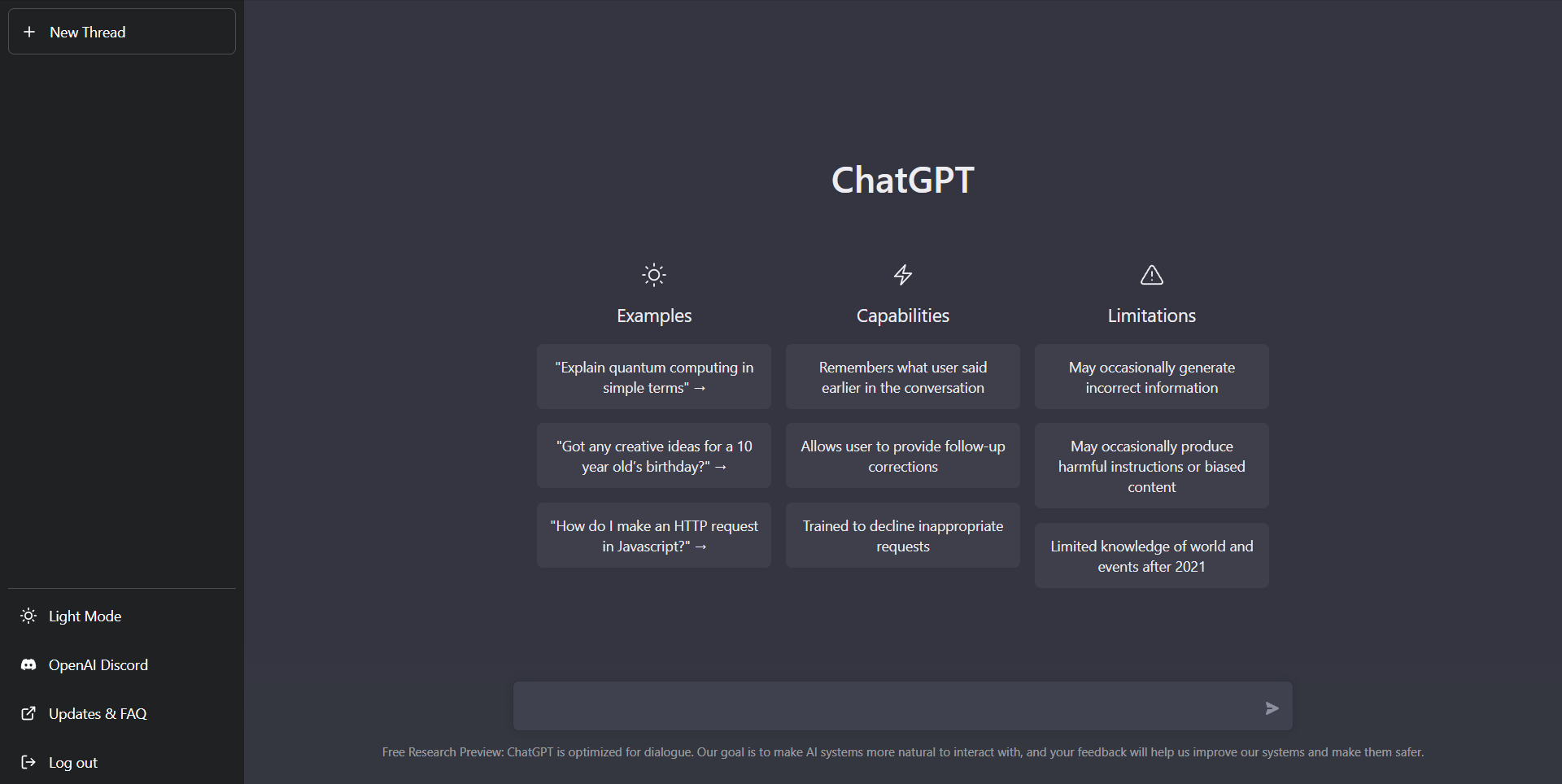How to Learn ChatGPT (Beginner)
If you’re interested in learning ChatGPT as a beginner, there are some steps you can take:
- Become familiar with the fundamentals of machine learning and natural language processing. Additionally, read the GPT-2 paper by OpenAI to better understand its architecture and training process.
- Use the OpenAI API to access and fine-tune the model for your specific needs. Practice tweaking different settings and parameters while fine-tuning datasets.
- Join online communities such as GitHub and Reddit — these platforms provide resources and allow you to ask questions from other developers dealing with similar models.
- To prepare training data, implement pre-processing techniques such as tokenization, stemming, or stop word removal.
- Test the model’s performance on tasks like language translation, text summarization, or question answering.
- Read over code examples and tutorials from the OpenAI community for further guidance. And don’t forget to try implementing your use case!
- Stay up-to-date with advancements in natural language processing by reading research papers or participating in conferences, workshops, or meetups.
By following these steps diligently, you’ll soon have a comprehensive knowledge of ChatGPT that will enable you to utilize its capability toward a range of NLP tasks. It’s important to remember that mastering any technology takes time; just keep at it patiently while trying out new things along the way!
ChatGPT full course (100 min):
ChatGPT Beginner to Pro (10 min):
ChatGPT Beginner Crash Course (30 min):
How to Learn ChatGPT (Advanced)
If you want to become an expert in using ChatGPT, here are the steps you need to take:
- Please familiarize yourself with the GPT (Generative Pre-training Transformer) architecture, its variants, and the underlying principles of transformer models and language models.
- Understand the pre-training process, including which data and tasks are used for training and how fine-tuning works for specific applications.
- Acquire access to the codebase and pre-trained weights from OpenAI’s GitHub repository.
- Experiment with different datasets and tasks by fine-tuning the model; observe the results closely.
- Read research papers and technical reports on GPT models, such as the original GPT paper or ChatGPT paper.
- Participate in online communities that discuss artificial intelligence topics; engage with experts in this field to gain knowledge and insights.
- Keep up with new developments in GPT models or other AI-related topics by following researchers’ work or organizations actively working on them.
- Take advantage of available pre-trained models on OpenAI’s GPT-3 Playground; explore their differences and evaluate which ones are best suited for your task at hand.
From Noob To Pro (Thread)
📝 You and your grandma is using ChatGPT wrong
— Linus (●ᴗ●) (@LinusEkenstam) January 3, 2023
🧠 Let's get you into EXPERT mode, seriously
📈 Here are some quick tips to get you from n00b to PRO
💬 prompts in thread 🧵 pic.twitter.com/x3Zy5tGd8J
ChatGPT Zero to Hero (15 Video Lessons)
ChatGPT Ultimate Guide (15 Minutes)
How To Use ChatGPT For Learning
ChatGPT can be employed to facilitate learning in several distinct ways:
- Generating Practice Questions And Answers: ChatGPT can be fine-tuned on a dataset of questions and answers to create new, similar questions and answers. This is highly useful for students who want to hone their understanding or for teachers aiming to create extra practice materials.
- Generating Summaries: ChatGPT can be fine-tuned on a dataset of text to produce summaries of the text. This proves invaluable for students who wish to quickly comprehend the key points of reading or for researchers desiring to rapidly summarize a large amount of text.
- Generating Personalized Study Plans: ChatGPT can be fine-tuned on a dataset of student profiles and learning objectives in order to create personalized study plans for each student.
- Automatic Essay Grading: ChatGPT can be fine-tuned on a dataset of essays to generate a model which grades essays based on the given prompt.
- Generating Flashcards: ChatGPT can also be fine-tuned on a dataset of flashcards which then generates cards tailor-made based on the given topic.
It’s paramount to call attention to the fact that ChatGPT is foremost and foremost a language model. Therefore its outputs aren’t always exact or pertinent. It’s always essential that users review and authenticate the outputs produced by the model prior to utilizing them for learning purposes. Additionally, it’s worth acknowledging that these are just some examples of how ChatGPT may be used for educational activities, with no doubt plenty more alternatives present where one might leverage the model’s capabilities.
ChatGPT and education (10 threads)
AI isn’t going to change education.
— Fab Maurin 🌶 (@fab_maurin) December 20, 2022
It just did.
Over the last 2 weeks, I’ve seen many educators exploring thought-provoking pedagogical use cases using ChatGPT.
Here are 10 of the finest:
🧵 THREAD OF THREADS
ChatGPT and education (22 minutes)
ChatGPT for language learning (30 minutes)
Five ways to become a speed learner with ChatGPT (6 min)
Leveraging ChatGPT for Teaching
ChatGPT can be beneficial for teaching in several different ways:
- Generating Lesson Plans: ChatGPT can be tailored on a dataset of lesson plans to generate new and similar lesson plans. This can prove useful for teachers who want to develop supplementary material or teacher trainers who are creating lesson plans for teacher education.
- Generating Question Prompts: ChatGPT can also be fine-tuned on a dataset of question prompts to create new inquiries. This could be advantageous for instructors seeking to craft extra questions for classroom discussions or exams.
- Generating Feedback and Evaluations: By adjusting the model on a dataset of student work and feedback, educators may obtain automated evaluations and feedback on students’ work.
- Generating Educational Content: Fine-tuning the model using educational content datasets is useful for pedagogues wanting to design additional educational materials, as well as content creators in the educational field.
- Creating Interactive Activities: With interactive activity datasets, teachers may generate novel interactive activities which could possibly benefit their students. Furthermore, this technique may assist instructional game designers.
It is essential to remember that ChatGPT is primarily a language model, and therefore its output may not always be reliable or applicable. Users should take the time to assess and confirm any generated results before utilizing them in teaching sessions. Additionally, there are likely numerous other ways to exploit the capabilities of ChatGPT beyond those listed above.
Did ChatGPT kill homework? (Thread)
ChatGPT just killed homework, essays, and take-home exams.
— Justine Moore (@venturetwins) December 11, 2022
Or did it?
How written work might survive in the age of AI 👇 pic.twitter.com/QQOfXBtGBL











